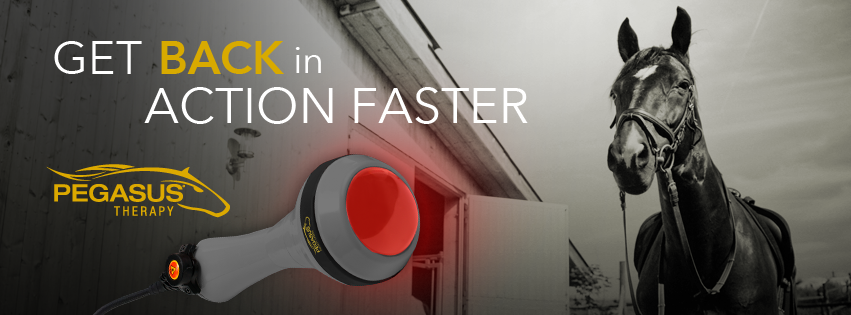Exploring the Holistic Strategy of Equine Therapy for Personal Development
Exploring the Holistic Strategy of Equine Therapy for Personal Development
Blog Article
How Laser Treatment in Equine Treatment Is Reinventing Veterinary Care for Equines
Laser treatment has actually emerged as a transformative method in equine veterinary treatment, supplying a non-invasive service that expedites recovery and enhances general health. The portability and convenience of laser therapy devices better underscore their growing indispensability amongst veterinarians.
Comprehending Laser Treatment

The technology behind laser treatment is based in the concept of photochemistry, where photons are absorbed by chromophores within cells, resulting in increased ATP manufacturing and modulation of reactive oxygen varieties (Equine Therapy). This, consequently, advertises cellular proliferation, decreases swelling, and speeds up healing. Veterinary professionals utilize different sorts of lasers, consisting of low-level lasers (LLLT) and high-power Course IV lasers, depending upon the details restorative purposes and the nature of the equine problem being treated
Various laser wavelengths and power setups are carefully picked to target different cells depths and attain wanted medical end results. Safety and security protocols are critical, as incorrect usage can bring about thermal damages or suboptimal healing impacts. Hence, a detailed understanding of laser therapy's devices and applications is vital for its reliable application in equine vet method.
Advantages for Horse Health
The myriad benefits of laser therapy for equine health include boosted healing, discomfort reduction, and improved flexibility. This sophisticated treatment modality leverages particular wavelengths of light to permeate tissues, promoting mobile function and advertising quick tissue fixing. The non-invasive nature of laser treatment guarantees marginal anxiety and pain for the steed, promoting a smoother recovery procedure.
Improved recovery is just one of the leading benefits, as laser treatment increases cellular regrowth and collagen synthesis. This leads to faster recuperation times from injuries and procedures. Pain reduction is achieved with the anti-inflammatory impacts of laser treatment, which decreases swelling and decreases the production of pain-inducing chemicals. Consequently, equines experience significant remedy for persistent and severe pain conditions.
Improved wheelchair is an additional important benefit, specifically for performance and working equines. By reducing inflammation and pain, and improving cells fixing, laser therapy assists in restoring joint feature and muscular tissue flexibility. The collective effect of these benefits is not just a quicker go back to regular activity yet additionally a general enhancement in the steed's lifestyle. Therefore, laser treatment stands as a transformative tool in contemporary equine veterinary care.
Common Conditions Treated
Laser treatment has arised as a flexible therapy alternative for a selection of usual equine problems. In addition, laser therapy is reliable for problems like osteo arthritis, where it helps reduce joint swelling and advertise cells repair.
Wound monitoring is an additional location where laser therapy has actually shown considerable pledge. Persistent wounds or slow-healing abscess can be especially tough in equines, yet laser therapy improves cellular regeneration and enhances blood circulation, thus speeding up the recovery procedure. Moreover, laser therapies have been successfully employed in handling unguis problems such as laminitis and abscesses, reducing pain and promoting faster healing.

Technology Behind Laser Therapy
Past the myriad conditions treatable with laser therapy, the technology itself merits more detailed examination. At the heart of laser treatment is making use of details wavelengths of light to click here for info permeate cells and generate organic reactions. These wavelengths, usually varying from 600 to 1000 nanometers, are precisely soaked up by chromophores in the skin, muscular tissue, and various other cells, prompting a cascade of mobile occasions.
Laser devices made use of in vet medicine commonly utilize low-level laser treatment (LLLT) or chilly laser read the full info here therapy. Unlike high-powered medical lasers, these devices operate at reduced energy degrees, enhancing therapeutic benefits while lessening thermal damage. The energy from the laser light promotes adenosine triphosphate (ATP) production, improves cellular metabolic rate, and speeds up cells fixing processes.

Success Stories and Study

Showcasing the substantial advantages of laser treatment, numerous success tales and study illuminate its transformative influence on equine health and wellness. One such case includes a pureblood racehorse suffering from chronic tendonitis. Standard treatments yielded marginal renovation, but after incorporating laser therapy into the routine, the steed displayed substantial decreases in inflammation and pain within weeks, inevitably returning to affordable racing.
One more engaging example features a dressage steed identified with extreme back discomfort, restricting its efficiency. A vet team used low-level laser therapy (LLLT) to target the irritated areas, causing marked improvement in versatility and a noteworthy decline in discomfort. Over several sessions, the steed reclaimed its peak type, showcasing the effectiveness of laser therapy in resolving musculoskeletal concerns.
Furthermore, a research performed at a leading equine center taken a look at 50 steeds with different soft cells injuries treated with laser treatment. The results stood out: 85% of the equines demonstrated sped up healing times and improved flexibility. These cases highlight the convenience and efficiency of laser therapy in equine medication, supplying a non-invasive, scientifically-backed method to enhancing recovery and performance in steeds.
Verdict
Laser treatment is transforming equine veterinary treatment by providing a non-invasive treatment that accelerates recovery, minimizes inflammation, and reduces pain. With its efficiency in dealing with an array of conditions, from bone and joint injuries to persistent conditions like osteo arthritis, this innovation significantly boosts equine health and flexibility. The useful reference mobility and versatility of laser treatment further emphasize its transformative influence on vet techniques, strengthening its role as an essential tool in modern equine health care.
Report this page